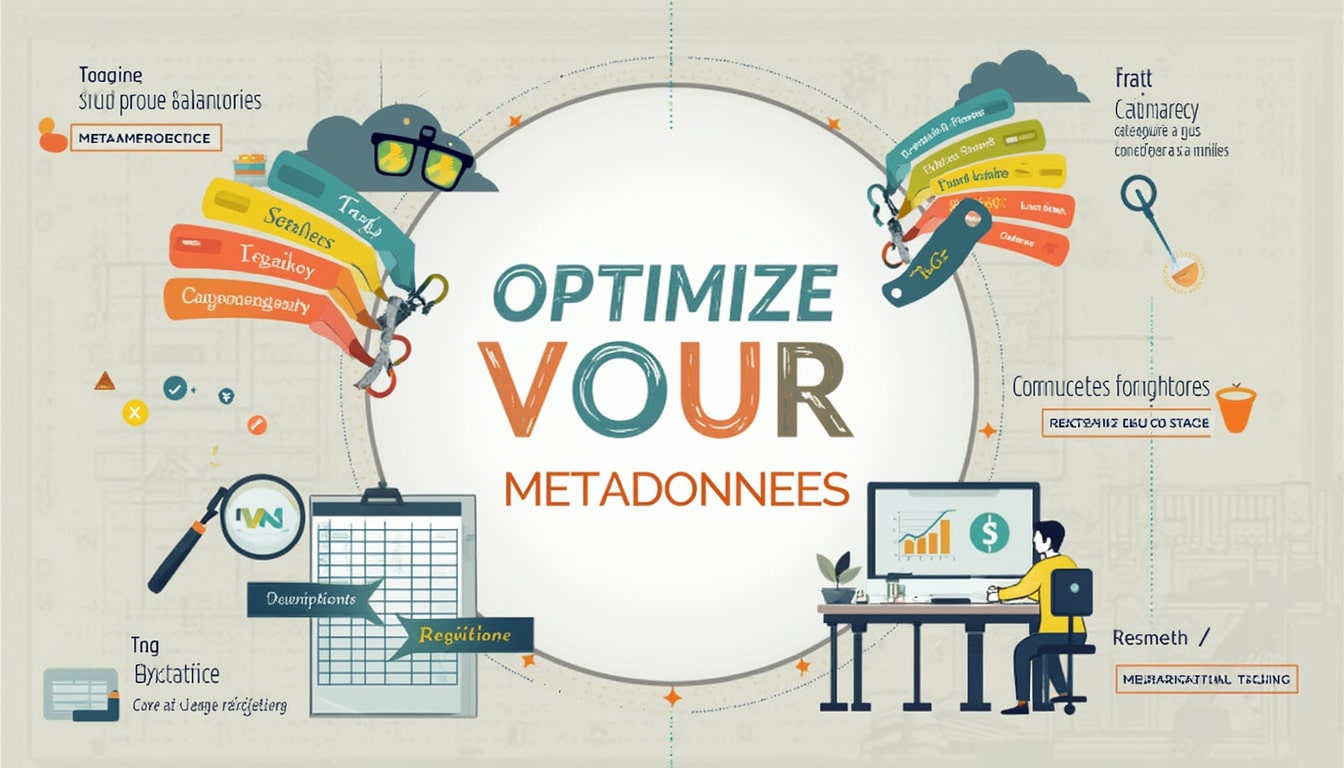In the digital landscape, tags serve as crucial indicators of content relevance, guiding both users and search engines in navigating the vast online information. Understanding how to create effective tags is essential for maximizing engagement and ensuring your content reaches its intended audience. This guide delves deep into the strategies to optimize your tagging process, aiming for greater visibility and improved user experience.
Tags operate as metadata, providing essential context and categorization for your content. Utilizing the right combination of tags can significantly enhance your content’s searchability and organizational structure. Through a systematic approach to selecting and implementing tags, you can improve not only your SEO performance but also the overall user journey on your site.
The Essence of Tags in Content Optimization
Tags are more than just simple labels; they play a pivotal role in how content is perceived. By associating content with relevant terms, tags help in conveying the theme and context to users and search engines alike. The choice of appropriate tags can impact search rankings, user navigability, and even engagement rates.
When considering tags, it is essential to focus on three main factors: relevance, creativity, and user intent. By aligning tags with these principles, you are setting up your content for success.

Understanding Different Types of Tags
To effectively utilize tags, one must comprehend the various types available:
- Title Tags: These define the title of your webpage or blog post. They not only show up in search results but also influence click-through rates. Aim for titles that are catchy yet informative.
- Meta Tags: These brief descriptions appear beneath your titles in search results and provide a snippet of what the page is about. Crafting compelling meta descriptions can significantly boost your click-through rates.
- Header Tags: These help structure your content hierarchically. Using headers correctly not only enhances readability but also signals search engines about the content’s organization.
- Alt Tags: Essential for images, these tags provide descriptions that improve accessibility for visually impaired users and bolster SEO for image search.
- Canonical Tags: These are crucial in managing duplicate content by indicating the preferred version of a webpage.
- Schema Markup: By adding structured data, you can enhance the search engines’ understanding of your content, possibly earning rich snippets that stand out in search results.
Best Practices for Effective Tagging
In optimizing tags for content, consider the following best practices:
- Relevance: Always ensure your tags are closely aligned with the content. Irrelevant tags can mislead users and search engines alike.
- Diversity: Use a mix of broad and specific tags to reach different audience segments.
- Keyword Research: Conduct research to identify popular search terms and trends. Tools like Google Keyword Planner can aid in discovering valuable keywords.
- Long-Tail Keywords: Incorporating longer, more specific search phrases can attract a more tailored audience and often lead to better conversion rates.
- Consistency: Maintain uniformity in tag usage across all content to help search engines understand the relationships and hierarchy between your pages.
- Avoid Keyword Stuffing: Excessive use of keywords can lead to search engine penalties. Stick to naturally written tags that represent your content authentically.

Common Tagging Mistakes to Avoid
When creating tags, it’s vital to steer clear of these common pitfalls:
- Irrelevant Tags: Using tags that don’t relate to your content can harm your credibility and SEO performance.
- Overlapping Tags: Ensure that your tags serve distinct purposes. Similar tags can confuse search engines and dilute the effectiveness of your strategy.
- Neglecting Analytics: Utilize analytics tools to evaluate the performance of your tags. Adjust your strategies based on real data instead of guesswork.
- Failure to Update: Regularly revisiting and refining your tags is crucial. As your content evolves, so should your tagging strategy.
Leveraging Tags for Various Content Types
Different content types necessitate different tagging strategies. For instance, blogs, product pages, and videos may each require unique focus areas when it comes to tags.
Blog Posts
For blogs, titles and meta tags should be crafted to not only reflect the content but also to entice readers into clicking. Consistently using related tags aids search engines in properly indexing your articles.
Product Pages
In e-commerce, product tags should detail the product’s key features and specifications. This way, potential customers can filter through your products seamlessly and improve the likelihood of conversion.
Video Content
For video content, ensure your tags encapsulate the essence of the video. Use specific keywords to describe the video title and provide comprehensive descriptions that attract viewers.

Automating and Optimizing Your Tagging Process
Automation tools can significantly streamline the tagging process. Use content management systems (CMS) that allow for bulk tagging and recommend tags based on content analysis. This is a practical way to maintain consistency and relevance without requiring a lot of manual work.
Additionally, you can integrate analytics tools to monitor the impact of your tags and continuously refine them based on performance metrics. Keeping a close eye on what works can lead to more informed decision-making in your strategy.

Tag Maintenance Strategies
Regular maintenance of your tagging system is crucial for long-term success. Create a routine to audit your tags, ensuring their relevance and accuracy over time. Incorporate user feedback and SEO trends to keep your tags aligned with current interests and behaviors.
Fostering Content Discoverability Through Effective Tagging
Tags play a critical role in enhancing the discoverability of your content. By employing well-researched tags, you create pathways for users and search engines to find your work efficiently. Enhancing discoverability leads to increased traffic, extended user engagement, and ultimately, higher conversion rates.
Combining engaging content with effective tagging strategies creates a powerful recipe for online success. Take the time to consider how each tag will align with user intent and search engine algorithms.
This alignment fosters a positive and productive interaction with your content, making it more accessible to those seeking relevant information.
User Experience Improvement Through Smart Tagging
The ultimate goal of tagging is to improve the user experience. Properly tagged content offers users a smoother navigation experience, allowing them to find what they’re looking for with minimal effort. This ease of use encourages users to remain on your site for longer and explore additional content.
Successful tagging not only aids in searchability but also enhances engagement and satisfaction rates. A considerate tagging strategy translates to a better user journey overall.

